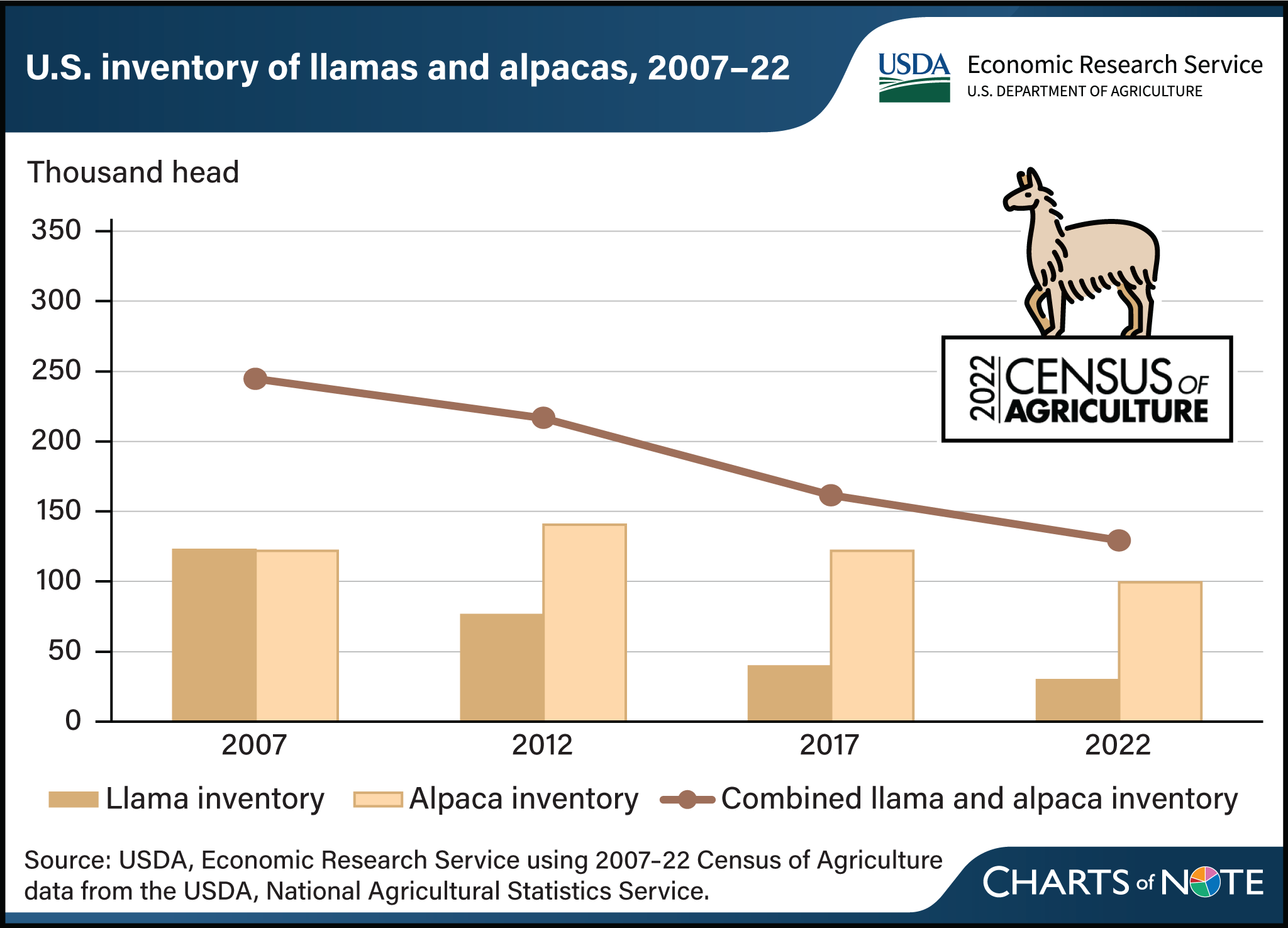2022 Census of Agriculture: U.S. llama and alpaca herd decreased by nearly half from 2007 to 2022
- by Danielle J. Ufer
- 9/16/2024

Camelids—members of the animal family that includes camels, alpacas, and llamas—are hardy and versatile livestock that contribute to global meat, milk, and fiber production. These specialized herbivores can survive in diverse and even arid terrain while providing services such as transportation and companionship or guarding flocks of sheep, goats, hens, and other livestock. Because of the camelids’ importance to worldwide food security and economic growth, the United Nations declared 2024 the International Year of Camelids. Despite their global popularity, the U.S. herd size of the primary camelids in production, llamas and alpacas, has been shrinking since 2007. Data from the USDA Censuses of Agriculture show the national combined herd of llamas and alpacas decreased by nearly half from 2007 to 2022, with llama inventories alone decreasing 76 percent. As of the 2022 Census of Agriculture, about 99,500 head of alpacas were reported nationally along with about 29,700 head of llamas. The number of farms with llamas and alpacas also decreased from 2012 to 2022. For more Census of Agriculture data, see the USDA, National Agricultural Statistics Service’s Census of Agriculture page. Information about Federal commodity programs for livestock, including alpacas and llamas, can be found in the USDA, Economic Research Service topic page, Animal Policy & Regulatory Issues.

